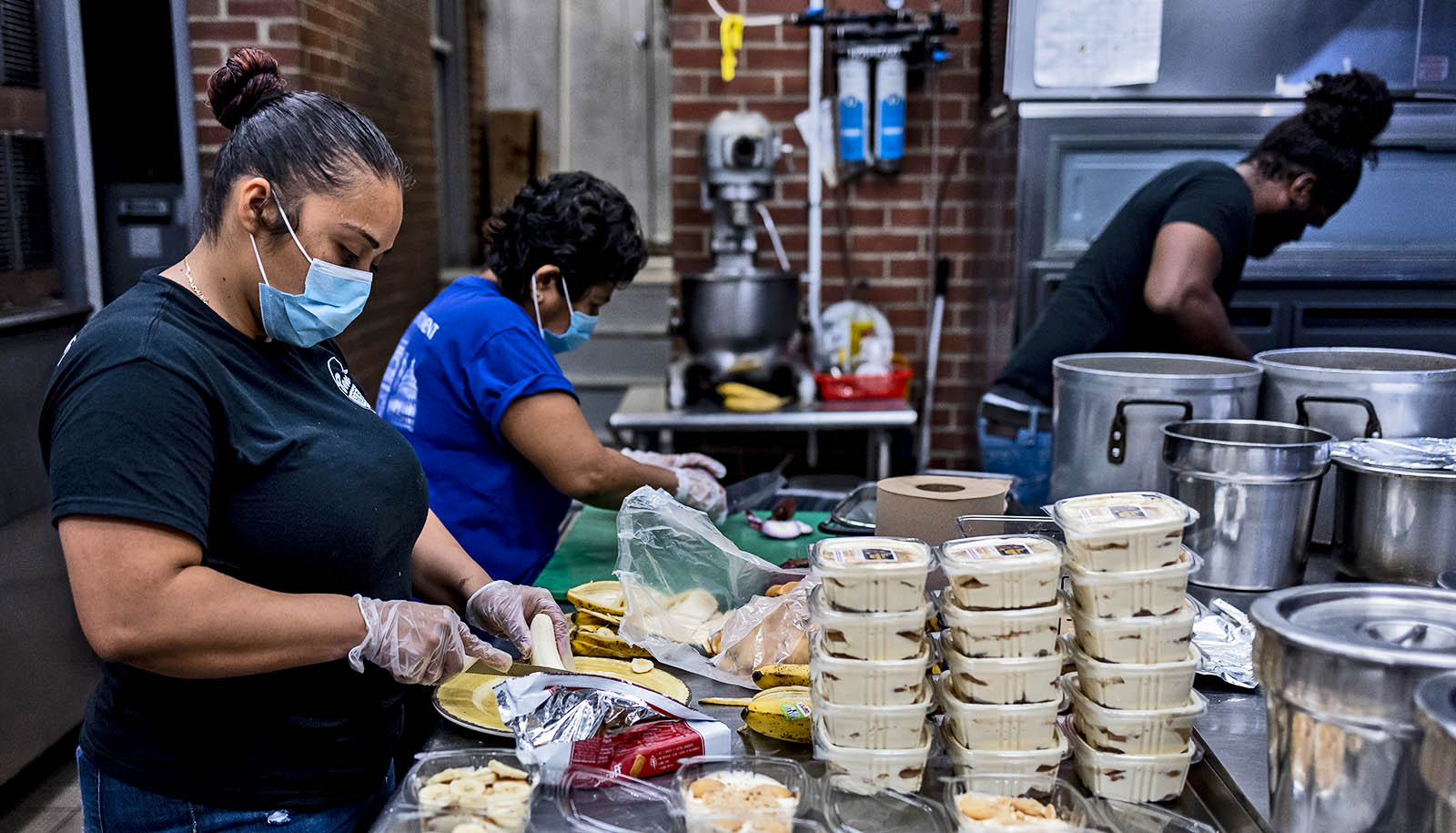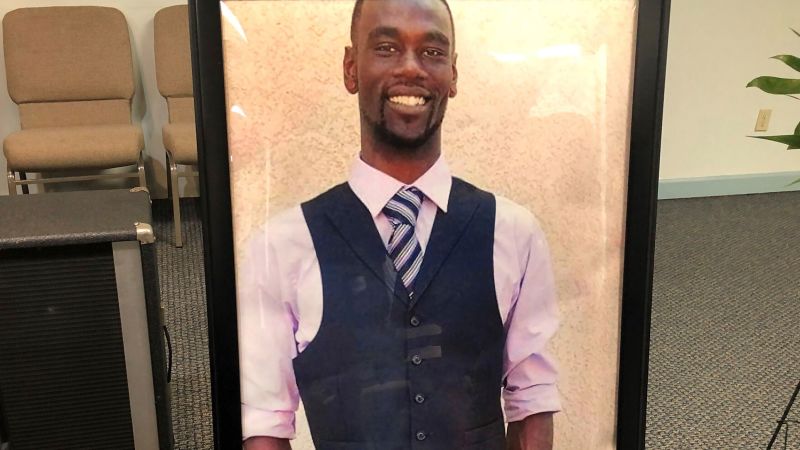There are currently two ongoing special counsel investigations into U.S. presidents over classified documents. Here’s what to …
Category: All
Implant that turns thought into action appears safe in trial
In an important step toward a medical technology that could help restore independence of people with paralysis, researchers find the investigational BrainGate neural interface system has low rates of associated adverse events.
More than two decades ago, a team researchers set out with an ambitious goal to provide people with paralysis a revolutionary neurotechnology capable of turning thoughts about movement into actual action, using a tiny device that would one day be implanted in the surface of the brain.
Their work led to an ongoing effort to create the BrainGate brain-computer interface, designed to allow clinical trial participants with paralysis to control assistive devices like computers or robotic limbs just by thinking about the action they want to initiate.
Now, after decades of advancements, researchers are getting their best glimpse yet at the safety profile for this promising technology and what it means for long-term use by people affected by neurologic disease or paralysis.
The team’s new study analyzes more than 17 years of safety data on clinical trials testing the BrainGate technology. The study found a low rate of adverse events associated with the implanted brain-computer interfaces (BCIs) and concluded that the technology should continue to be evaluated for its potential to help people with paralysis regain lost neurologic function.
“In the largest ongoing trial of intracortical brain-computer interfaces, the interim safety profile reported today supports the possibility that these systems may become restorative neurotechnologies for people with paralysis,” says Leigh R. Hochberg, an engineering and brain science professor at Brown University, a critical care neurologist at Massachusetts General Hospital, and director of the BrainGate academic consortium leading the development and testing of the technology.
The new study is an important step for the BrainGate consortium and other BCI research as the current BrainGate clinical trial enters its 14th year.
“Intracortical brain-computer interfaces have so much promise for restoring communication and mobility,” says Hochberg, who also directs the VA Rehabilitation Research and Development Center for Neurorestoration and Neurotechnology in Providence, Rhode Island.
“Translating these advances in neural engineering to patient care will depend largely on whether the devices are accompanied by an acceptably low degree of risk.”
The BrainGate device is a type of BCI that is implanted in a part of the brain that controls limb movement. The microelectrode array—called a “Utah” array—is smaller than a contact lens and is placed into the surface of the motor cortex. It works by detecting neural signals associated with intended movements, sending them out to a small nearby computer that then uses algorithms to translate the signals into movement commands.
The ultimate goal of BrainGate is to restore communication, mobility, and independence for people with tetraplegia. Previous studies by BrainGate researchers have shown that the BCI can enable people to move robotic arms or even move their own paralyzed arm and hand.
The new BrainGate study evaluated a total of 12,203 days of safety data from 14 clinical trial participants with quadriparesis resulting from spinal cord injury, brainstem stroke, or ALS. Participants were ages 18 to 75 and were enrolled in BrainGate’s trials between 2004 to 2021. In that span, the study found, there were 68 device-related adverse events—the most common was skin irritation around the small portion of the device on top of a user’s head that connects the neural sensor array implanted in the brain to the nearby neural decoding system.
There were six serious adverse events determined to be related to the BrainGate device or surgical procedure. Two participants, both of whom had a history of traumatic brain injury, had brief post-operative seizures, which were easily treated. The researchers say none of the adverse events documented in the study were unanticipated, resulted in permanently increased disability, required removal of the device, or led to infections in the nervous system.
Data from the clinical trials came from seven sites across the US, including Mass General and the Providence VA Researchers at Mass General led the study in collaboration with colleagues from Brown, the VA, Stanford University, and several other institutions in the BrainGate consortium. The scientists write in the study that while the safety profile is a big step forward, there is still much work to be done to reach their ultimate goals for the technology.
“Overall, we are reassured by our findings over the past 17 years that the investigational BrainGate Neural Interface system is being deployed safely,” the researchers write. “Both our group and others continue to work on components and systems that would permit [BCIs] to become fully implanted, available to users around-the-clock, and incorporating a suite of design characteristics previously proposed.”
“In the future, I hope that BrainGate becomes an option for everyone with paralysis,” says John Donoghue, a professor at Brown. “The golden day would be when somebody who is paralyzed gets a BrainGate-like system implanted, and they go play basketball.”
The new study appears in Neurology. The research received support from the US Department of Veterans Affairs, the National Institutes of Health, Howard Hughes Medical Institute, Massachusetts General Hospital, the Carney Institute for Brain Science at Brown University, and several additional funders noted in the paper.
Source: Brown University
LAURA INGRAHAM: Rejecting basic standards of merit never works out
Fox News host Laura Ingraham explains how woke schools are fighting against merit to promote diversity and equity and what this means for children on “The Ingraham Angle.”
LAURA INGRAHAM: It’s not just laziness or sloppiness at play here. In our schools, in our corporate boardrooms and in politics, what’s best about America is slowly being erased, replaced by a slavish devotion to equity and diversity. These concepts are being relentlessly promoted in woke curricula from kindergarten on up. In high school, we see how evil this really is. Consider what just happened in Northern Virginia, where school administrators purposely withheld from students applying to college the fact that they had, in fact, been recognized as National Merit Scholars. All because the administrators didn’t want to hurt the feelings of the students who didn’t get the scholarships. What does this mean? Well, this means that the students were punished by woke schools because the students excelled.
VIRGINIA SCHOOL AWARDS SCANDAL DEEPENS, DRAWS OUTRAGE FROM GOVERNOR, AG: ‘THIS SHOULD BE ILLEGAL’

Children listen to their teacher as they sit in a classroom. (MARTIN BUREAU/AFP via Getty Images)
((MARTIN BUREAU/AFP via Getty Images))
CLICK HERE TO DOWNLOAD THE FOX NEWS APP
…
Instead of keeping the bar high to encourage hard work by students across the country, schools dropped standards, dropped standardized test requirements. And to this day, those tests remain optional for many colleges. Now, while this helped increase the pool of diverse applicants, it does nothing to change the fact that we have generations of minority students who’ve been cheated by liberal educators. Last October, a report revealed the shocking state of things for Illinois third-graders. Yet measuring objective merit, as they did in that study itself, the left argues, is racist — ridiculous. George W. Bush was right when he called this the soft bigotry of low expectations.
US pilot shot down four Soviet MiGs in 30 minutes — and kept it a secret for 50 years
Seoul, South Korea
CNN
—
Royce Williams was a real life “Top Gun” 10 years before Tom Cruise was even born.
On a cold November day in 1952, Williams shot down four Soviet fighter jets – and became a legend no one would hear about for more than 50 years.
The now 97-year-old former naval aviator was presented with the Navy Cross, the service’s second-highest military honor at a ceremony Friday in California.
Navy Secretary Carlos Del Toro said on Friday that among the many proposals he has reviewed to upgrade sailors’ awards, Williams’ case “stood out above all others. It was very clear to me that his actions were truly extraordinary and more closely aligned with the criteria describing a higher medal.”
“Freedom does not come cheap,” Del Toro said. “It comes through the sacrifice of all those who have and continue to serve in today’s military. Your actions that day kept you free. They kept your shipmates free in Task Force 77. Indeed, they kept all of us free.”
Here’s what Williams did to earn that honor.
On November 18, 1952, Williams was flying the F9F Panther – the US Navy’s first jet fighter – on a mission during the Korean War.
He took off from the aircraft carrier USS Oriskany, which was operating with three other carriers in a task force in the Sea of Japan, also known as the East Sea, 100 miles off the coast of North Korea.
Williams, then age 27, and three other fighter pilots were ordered on a combat air patrol over the most northern part of the Korean Peninsula, near the Yalu River, which separates North Korea from China. To the northeast is Russia, then part of the Soviet Union, which supported North Korea in the conflict.
As the four US Navy jets flew their patrol, the group’s leader suffered mechanical problems and with his wingman, headed back to the task force off the coast.
That left Williams and his wingman alone on the mission.
Then, to their surprise, seven Soviet MiG-15 fighter jets were identified heading toward the US task force.

“They just didn’t come out of Russia and engage us in any way before,” Williams said in a 2021 interview with the American Veterans Center.
Wary commanders in the task force ordered the two US Navy jets to put themselves between the MiGs and the US warships.
While doing this, four of the Soviet MiGs turned toward Williams and opened fire, he recalled.
He said he fired on the tail MiG, which then dropped out of the four-plane Soviet formation, with Williams’ wingman following the Soviet jet down.
At that point, US commanders on the carrier ordered him not to engage the Soviets, he said.
“I said, ‘I am engaged,’” Williams recalled in the interview.
Williams said he also knew that because the Soviet jets were faster than his, if he tried to break off they’d catch and kill him.
“At that time the MiG-15 was the best fighter airplane in the world,” faster and able to climb and dive quicker than the American jets, he said in the interview.
His plane was suited to air-to-ground combat, not aerial dogfights, he said.
But now he was in one, with not just one, but six Soviet jets as the other three MiGs that broke off earlier returned.
What ensued was more than a half-hour of aerial combat, with Williams constantly turning and weaving – the one area where the F9F could compete with the Soviet aircraft – to not let the superior MiGs get their guns fixed on him.
“I was on automatic, I was doing as trained,” he said.
So were the Soviets.
“But on some occasions … they made mistakes,” Williams said.
One flew at him, but then stopped firing and dipped under him. Williams figured its pilot was killed by his gunfire.
And he described how another MiG got right in front of him, he hit it with his gunfire, and it disintegrated, causing Williams to maneuver sharply to avoid the wreckage and its pilot as the plane came apart.
Over the course of the fight, Williams fired all 760 rounds of 20mm cannon shells the F9F carried, according to an account of the engagement from the US Navy Memorial’s website.
But the Soviets scored hits on Williams, too, disabling his rudder and wing control surfaces, leaving only the elevators in the rear of the plane viable for him to move the jet up and down.
Luckily, he said, at this point he was heading in the direction of the US task force off the coast. But one of the remaining Soviet jets was still on his tail.
He said he flew in an up-and-down roller coaster pattern, with bullets flying above and below him as he moved, the Soviet pilot trying to get a clear shot.
Williams’ wingman rejoined the fight at this point, getting on the Soviet’s tail and scaring him off, according to the Navy Memorial account.
But Williams still had some difficult flying to do to get the damaged jet back on board the carrier.

First, with the task force wary of Soviet warplanes possibly attacking it, its heightened air defenses initially thought Williams’ F9F was a MiG, and destroyers guarding the American carriers opened fire on him.
Williams said his commander quickly put a stop to that, eliminating one danger.
Still, Williams had to get his jet on the deck on the carrier, something he’d usually do at an airspeed of 105 knots (120 mph). But he already knew if he went lower than 170 knots (195 mph), his aircraft would stall and plunge into the icy sea.
And he couldn’t turn to line up with the carrier. So the ship’s captain decided to take the extraordinary step of turning the carrier to line up with Williams.
It worked. He slammed onto the deck and caught the third and final arresting wire.
On the deck on the carrier, Navy crew counted 263 holes in Williams’ plane. It was in such poor shape, it was pushed off the ship into the sea, according to the Navy Memorial account.
But as the plane disappeared below the waves, something else had to also – the fact that the US-Soviet aerial combat happened at all.
News of Williams’ heroics went all the way to the top, with then-President Dwight Eisenhower among the senior US officials eager to speak to the pilot, according to the Navy Memorial’s website.
“Following the battle, Williams was personally interviewed by several high-ranking Navy admirals, the Secretary of Defense, and also the President, after which he was instructed to not talk about his engagement as officials feared the incident might cause a devastating increase of tensions between the US and Soviet Union, and possibly ignite World War Three,” the website says.
A US Defense Department account of the incident also notes that US forces were trying out new communications intercept equipment that day. It was feared that revealing the Soviet role in the combat would have compromised that US’ advantage.
The records of Williams’ dogfight were promptly classified by US officials and he was sworn to secrecy, meaning it would take more than five decades before his victories could be fully recognized.
In 1953, Williams was awarded a Silver Star, but the citation made no reference to Soviet aircraft, just “enemy” ones. And it only mentioned three kills. The fourth was not known until Russian records were released in the 1990s, the website says.
So it was not until 2002, when the records were declassified, that Williams could even tell those closest to him.
“For the rest of his accomplished Navy career, and for decades after retirement, the details of Williams’ dogfight with Soviet MiGs over North Korea remained a secret,” according to the US Defense Department.
“When he was finally contacted by the government and told his mission was declassified, the first person Williams said he told was his wife.”
In the following years, veterans groups who learned what he did said the Silver Star was insufficient reward for Williams, with some saying he should get the military’s highest award – the Medal of Honor.
In December last year, more than 70 years after the Korean War aerial battle, Del Toro said Williams’ Silver Star should be upgraded to the Navy Cross.
California Rep. Darrell Issa, who pushed for Williams to get the upgraded medal, called him “a Top Gun pilot like no other, and an American hero for all time.”
“It is to this day the most unique US-Soviet aerial combat dogfight in the history of the Cold War,” Issa said in a statement.
“The heroism and valor he demonstrated for 35 harrowing minutes 70 years ago in the skies over the North Pacific and the coast of North Korea saved the lives of his fellow pilots, shipmates, and crew. His story is one for the ages, but is now being fully told.”
Inside Chicago's $8.5BN Airport Rebuild
O’Hare is finally getting a major upgrade. See how Egnyte helps teams deliver complex infrastructure projects like this …
Pay gaps among less educated workers are ‘striking’
Young Asian and white men without college education are paid more—sometimes far more—than both Black men and women of all racial groups, according to a new study.
The study finds that young Black men with no college education earn barely half of what their Asian American and white counterparts make. Latinx, Asian, and Black women lag even further.
“…rather than wasting time blaming workers’ choices or attitudes, we might get further by identifying discriminatory labor market processes.”
“Earnings are an important factor to study because they’re related to other outcomes, like health, engagement with the criminal justice system and family development,” says study leader Byeongdon Oh, a postdoctoral researcher in the University of California, Berkeley’s Social Sciences D-Lab. “So we focus on the non-college population at an early age. They are already disadvantaged economically—they have very low earnings. If there’s a sizable racial or ethnic earnings disparity in this population, there may be severe consequences.”
The study appears in the journal Sociology of Race and Ethnicity. It provides the first detailed look at the earnings of young adults with no college experience as their working lives take shape.
In recent years, about one-third of young Americans have stopped their education after high school. That projects to roughly 1 million less-educated young people every year entering a job market that increasingly requires advanced education and training to earn even a middle-class salary. Latinx and Black people are over-represented in this group.
To understand their experience, Oh and colleagues Daniel Mackin Freeman and Dara Shifrer from Portland State University studied data from the High School Longitudinal Study of 2009, tracing racial and ethnic earnings disparities among men and women who had never attended college. In 2016, they were in their early 20s.
“Striking” was the word the authors used to describe the earnings gaps revealed in the core data:
- Young Asian American men with no college education earned an average of $24,837 in 2016, followed by white men at $22,056 and Latinx men at $17,984. Young Black men averaged just $12,573—barely half the wages earned by Asian Americans and whites.
- A similar, but less severe, disparity was evident among young women with no college experience. White women on average earned $14,766, followed by Latinx women at $12,465, Asian American women at $10,935, and Black women at $10,871.
- The gap between these women and men was vast, with young Black women on average earning only 44 cents for every dollar earned by Asian American men with similar levels of education.
How to explain these racial and gender gaps in earning?
Oh says the data did not allow the researchers to determine the causes. They did find, however, that a range of possible factors—from family background and home location to high school grades and criminal records—rarely account for the earnings gaps.
But, he explains, racial discrimination in the workforce cannot be ruled out as the cause.
Oh suggests that complex social and economic factors may sort people of color into lower-paying job sectors, but the estimated earnings gaps among groups of people in the same occupation are still dramatic. These earning disparities, he says, may reflect employer bias against women and Black men.
The findings “suggest that, like their more educated counterparts, young non-college-educated women may face pernicious earnings discrimination in the labor market, regardless of their race/ethnicity,” the authors write.
They add: “The results may indicate that employers devalue the work of young Black men without a college education to a greater degree than they do the work of white, Latinx, and Asian men without a college education.”
According to Oh, the pay disparity between Asian and white men on one side and Black men on the other may actually be worse than the data suggest. A disproportionate number of young men who did not go to college are Black. A disproportionate number of young Black men have been incarcerated, he explains, and incarcerated men were not tracked in the survey data.
“And so our findings on the earnings gap are conservative—it may be larger,” he says.
The new study opens up a range of new questions for Oh and other researchers. Understanding the experience of the young workers would require more targeted surveys and in-person interviews. Those would allow the researchers to understand whether discrimination is to blame, and if so, how it works, Oh says.
“I hope the contribution of our research is to make people ask why we have these striking earnings gaps,” he says. “Then, rather than wasting time blaming workers’ choices or attitudes, we might get further by identifying discriminatory labor market processes.”
Source: UC Berkeley
Nick Jonas' wife Priyanka Chopra describes premature daughter's time in NICU
Priyanka Chopra is looking back on the first year of her baby daughter’s life, admitting she and her husband Nick Jonas didn’t know if Malti would “make it” while they kept vigil over her in the neonatal intensive care unit for three months.
“I’ve been really protective of this chapter of my life with my daughter. Because it’s not about my life only. It’s hers too,” Chopra told British Vogue for its February issue. The article was published just after her daughter’s first birthday.
Chopra and Jonas’ daughter was born on Jan. 15 last year via a surrogate a full trimester prematurely.
“I was in the OR [operating room] when she came out,” the “Quantico” actress told Vogue during an interview at her house while playing with Malti. “She was so small, smaller than my hand. I saw what the intensive-care nurses do. They do God’s work. Nick and I were both standing there as they intubated her. I don’t know how they even found what they needed [in her tiny body] to intubate her.”
PRIYANKA CHOPRA SHARES ADORABLE NEW PHOTOS OF BABY MALTI

Priyanka Chopra and Nick Jonas’ baby was born a full trimester prematurely but is now “healthy and thriving.”
(Priyanka Chopra/Instagram)
She said for the next three months they spent every day with Malti on her or his chest before they were able to bring her home.
“I didn’t know if she would make it or not,” she explained.
Malti is now “healthy and thriving,” Chopra celebrated, but said as a “NICU mom” she still struggles to shed those worries about her daughter’s health.
CLICK HERE TO SIGN UP FOR THE ENTERTAINMENT NEWSLETTER
“The first time she had a solid morsel [of food] she gagged and I thought I’d killed her,” she said, adding that her mother and in-laws have been extremely supportive with the baby, explaining that things like that are normal in babies.
“But because I’m a NICU mommy, the stakes are so high,” she said “And I have to shed that. I will.”

Priyanka Chopra and Nick Jonas share 1-year-old baby Malti.
Jonas, who joined the interview, called fatherhood “overwhelming” but said there’s “nothing better.”
A recent appearance on Kelly Clarkson’s show, Jonas said he and his wife had a party for Malti.
CLICK HERE TO GET THE FOX NEWS APP
“We had to celebrate,” he said. “She went through a pretty wild journey in the early part of her life, so we had to celebrate in style. She’s one. She’s beautiful. It’s amazing — the best.”
5 Memphis officers fired after death of man who was hospitalized after his arrest
CNN
—
The Memphis Police Department has terminated five police officers in connection with the death of Tyre Nichols, who passed away in a hospital after being arrested by police earlier this month, according to a post from the department’s verified Twitter account.
“The egregious nature of this incident is not a reflection of the good work our officers perform, with integrity every day,” Police chief Cerleyn “CJ” Davis said in a statement.
Investigators working on an internal review of the arrest found the officers violated policies for use of force, duty to intervene and duty to render aid, the chief said.
Nichols’ family voiced its approval of the terminations, according to a statement from their attorneys.
“We join Tyre’s family in supporting the Department’s decision to terminate the five officers who brutalized him, ultimately causing his death. This is the first step towards achieving justice for Tyre and his family,” attorneys Ben Crump and Antonio Romanucci said. “They must also be held accountable for robbing this man of his life and his son of a father.”
The Tennessee Bureau of Investigation is looking into whether the officers’ actions were criminal in nature.
“Due to the ongoing criminal investigation, the Memphis Police Association will not comment on the termination of officers in the Tyre Nichols case,” the union representing the officers said. “The citizens of Memphis, and more importantly, the family of Mr. Nichols deserve to know the complete account of the events leading up to his death and what may have contributed to it.”
Also, the Department of Justice and FBI have opened a civil rights investigation.
On January 8, the police department announced officers pulled over a motorist for reckless driving the previous day. “As officers approached the driver of the vehicle, a confrontation occurred and the suspect fled the scene on foot,” officials said in a statement posted on social media.
Officers pursued the suspect and again attempted to take him into custody when another confrontation occurred before the suspect was apprehended, according to police.
“Afterward, the suspect complained of having a shortness of breath, at which time an ambulance was called to the scene. The suspect was transported to St. Francis Hospital in critical condition,” officials said.
The man, identified as Nichols, died a few days later, according to the Tennessee Bureau of Investigation.
Details about the injuries Nichols suffered or his cause of death have not been released. CNN has reached out to the Shelby County coroner.
On Tuesday, city officials said the video record by the officers’ body-worn cameras will be released publicly after the police department’s internal investigation ends and after the family is given a chance to review the recordings.
Crump said Friday the family will get a chance to see the footage “in the coming days.” He and the family have planned a news conference for Monday afternoon.
A brie(f) history of cheese – Paul Kindstedt
Check out our Patreon page: https://www.patreon.com/teded View full lesson: …
Toddlers go out of their way to help dogs
Toddlers will go out of their way to help dogs, especially pups struggling to access out-of-reach treats and toys, according to new research.
The finding shows that young children notice and understand dogs’ goals, using that knowledge to help them.
“It’s been known for a long time that toddlers will go out of their way to help struggling humans, even strangers,” says Henry Wellman, professor emeritus of psychology at the University of Michigan.
“But perhaps such altruism is specially evolved for and targeted toward other humans (who after all might help them back). But no, it applies to other animals too, like dogs they will never see again.”
Wellman and colleagues conducted experiments with three dogs—Fiona, Henry, and Seymour—at the University of Michigan’s child laboratory between 2015 and 2020 to determine if young children spontaneously helped a pet.
The researchers studied 97 children (51 girls and 46 boys) ages 2 and 3 years, 44 of whom had dogs as pets. In the lab, the children met one of the friendly dogs in an enclosed baby gate fence while a treat or toy was placed outside it. Dogs reacted naturally, either showing interest (either pawing or begging) in accessing the item or ignoring it.
Children provided dogs with out-of-reach items 50% of the time when dogs showed interest rather than ignored items, indicating sensitivity to the dog’s goals, the study shows.
In addition, children who lived with pet dogs were more likely to provide items to the pups in the experiment if two scenarios were present: the dogs were lively and engaged rather than subdued, and if the item was a treat rather than a toy.
“These findings lend support to our hypothesis that children’s early-developing proclivities for goal-reading and prosociality extend beyond humans to other animals,” says lead author and alumna Rachna Reddy, who is now a postdoctoral fellow in evolutionary anthropology at Duke University.
The researchers believe children’s willingness to help goes beyond dogs; it likely extends to cats, birds, horses, pigs, ducks, sheep, and more. But demonstrating that will take future research, Wellman says.
The study appears in the journal Human-Animal Interactions.
Source: University of Michigan








